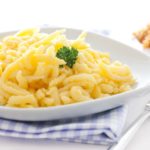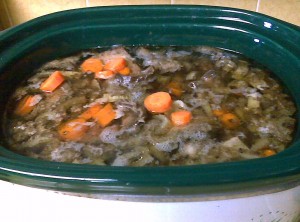I have been telling you that I have modified my NutriSystem diet to make it lower in carbohydrates and higher in fat in order to prevent falling cholesterol levels. My modified plan would be considered a low-carb diet by Dr. Stephen Phinney and Dr. Jeff Volek as defined in their book, The Art and Science of Low Carbohydrate Living: An Expert Guide to Making the Life-Saving Benefits of Carbohydrate Restriction Sustainable and Enjoyable. I thought I would share with you what a typical day on my modified NutriSystem diet looks like. It could possibly be improved a bit by adding some additional low-carb vegetables at lunch, but it is performing well as is.
Breakfast
NUTRISYSTEM Chewy Chocolate Chip Granola Bar 2012 (1 bar)
Egg (1 ea)
Butter (2 tsp)
Lunch
NUTRISYSTEM Wedding Soup 2012 (1 x 1 container)
FAGE Total 0% All Natural Nonfat Greek Strained Yogurt (1 x 1 container)
Afternoon Snack
Nuts, mixed nuts, without peanuts, raw (1 oz)
Dinner
NUTRISYSTEM Lasagna with Meat Sauce 2012 (1 package)
Mixed greens (2 oz)
Red bell peppers (1/2 ea)
Salad dressing, GOOD SEASONS ITALIAN, prepared (1 Tbs)
Evening Snack
NUTRISYSTEM Pretzels 2012 (1 package)
Calories 1216.24
Calories From Fat (41%) 500.71
Calories From Protein (23%) 284.35
Calories From Carbs (35%) 431.18
Total Fat 55.87g 86%
Carbohydrates 110.77g 37%
Dietary Fiber 16.55g 66%
Sugar 28.75g
Net Carbohydrates 94.22g
Protein 71.82g 144%

